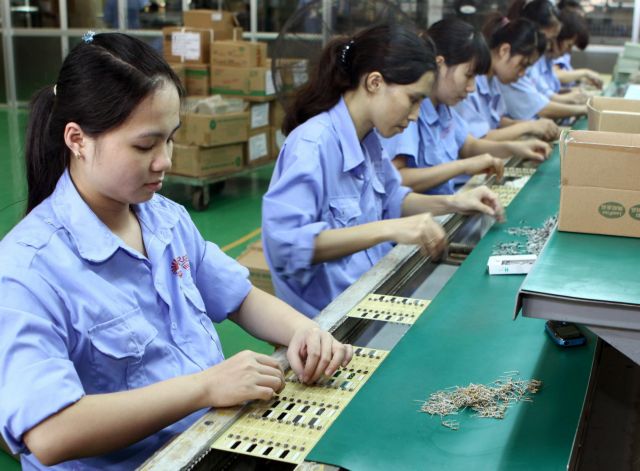 Society
Society


|
| Starting next year, minimum wage in the private sector will increase by 5.5 per cent after three-party negotiations between representatives of the State, employers and employees ended yesterday. — VNA/VNS Photo |
Accordingly, minimum wage for workers in Region I, which covers urban Hà Nội and HCM City, is set to rise to VNĐ4.42 million (US$190.5) while workers in Region II – covering rural Hà Nội and HCM City, along with major urban areas in the country like Cần Thơ, Đà Nẵng, and Hải Phòng – will earn VNĐ3.92 million.
Those in Region III, or provincial cities and the districts of Bắc Ninh, Bắc Giang and Hải Dương provinces, will make at least VNĐ3.43 million a month, while Region IV, or the rest of the country, will make VNĐ3.07 million.
The National Wage Council comprising 15 members – split evenly between the labour ministry, representing the State, Việt Nam Chamber of Commerce and Industry (VCCI), representing the employers, and the Việt Nam General Confederation of Labour, representing the employees – holds meetings every year to debate the regional minimum wage for the next year.
Deputy minister of labour Doãn Mậu Diệp said the current minimum wage has met 95 per cent of the labour force’s minimum living standards so the raise would make their lives more comfortable.
The labour ministry presented three schemes: increasing the minimum wage by 4.9 per cent, 4 per cent or 6 per cent.
The VCCI argued that since the minimum wage has already met 95 per cent of the basic living demands, there’s no need for any further increase to the workers’ wage in 2020.
The group said if there should be an increase, the rate should be kept at 1-2 per cent, because boosting minimum wage would increase businesses’ expenditures and hurt their performance, but the organisation said it acknowledged the calls for higher minimum wage from the State and from employees given robust economic growth in recent years.
Hoàng Quang Phòng, vice chair of VCCI, said this result “will not bring any smile to the business community but we are sympathetic and willing to share the workers’ difficulties.”
The labour confederation said that though the final result fell short of its hopes for a more than 6 per cent increase, 5.5 per cent serves as a “middle ground” most of the Council members could agree upon.
Minimum wage in Việt Nam has been rising for the last three years, with year-on-year increases of 7.3 per cent, 6.5 per cent and 5.3 per cent in 2017, 2018, and 2019, respectively. — VNS




